By Susan Holtham and Fiontan Moran
So, what is the big deal about Malevich's Black Square? You may have heard about it having 'mystical ways' or swear you saw it referenced on an album cover (either that or it's following you, wherever you look), but what is it all about? To help you get to grips with the monochrome modern masterpiece, we caught up with the assistant curator of our major Malevich retrospective, Fiontan Moran, to shed some light on the famous artwork and find out just why the humble square is now so important.
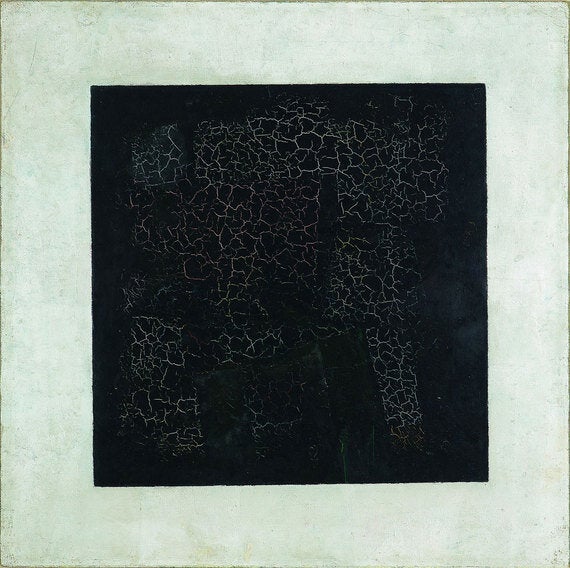
Kazimir Malevich, Black Square 1913, © State Tretyakov Gallery, Moscow
1. It is the first time someone made a painting that wasn't of something
Or at least it's often held to be so, and the Kiev-born artist Kazimir Malevich certainly thought it was (though the dispute rages on). He wrote in a handout to accompany its first showing in the exhibition The Last Exhibition of Futurist Painting 0. 10:
Up until now there were no attempts at painting as such, without any attribute of real life...Painting was the aesthetic side of a thing, but never was original and an end in itself.
He made his intention clear; he wanted to completely abandon depicting reality and instead invent a new world of shapes and forms that belonged exclusively in the realm of art for art's sake. In his 1927 book The Non-Objective World, he wrote:
In the year 1913, trying desperately to free art from the dead weight of the real world, I took refuge in the form of the square.
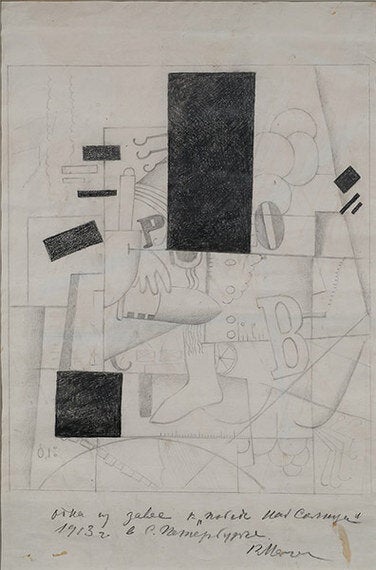
Kazimir Malevich (1879-1935), Sketch for a stage curtain for the opera Victory Over the Sun, 1928. Photograph: St. Petersburg Museum of Theater and Music
2. It began life as a stage curtain
The first Black Square (Malevich actually painted not one, but four versions between 1915 and 1930) was (we believe) painted in 1915, although Malevich actually dated it 1913 - maybe with an eye to his legacy as the father of abstraction. In any case, the square's first appearance was indeed in 1913, as the design for a stage curtain in the futurist opera Victory over the Sun.
Malevich had been collaborating with the musician Mikhail Matyushin and the poet Aleksei Kruchenykh on a manifesto calling for the rejection of rational thought (another facet of overturning the established hierarchies of absolutely everything that was taking place in the western world at the time). Together with poet Velimier Khlebnikov they staged Victory over the Sun, where the characters aimed to overturn reason by capturing the sun and destroying time. The libretto used Kruchenykh's zaum - a new language of sounds unrelated to meaning. This sparked something for Malevich as curator Achim Borchardt-Hume puts it: 'Malevich, infused with the spirit of his friend's linguistic experiments, invented at breath-taking speed a new painterly language made up solely from shapes and colours. He called this language suprematism'. The opera opened up new ideas about what art could be, which brings us to...
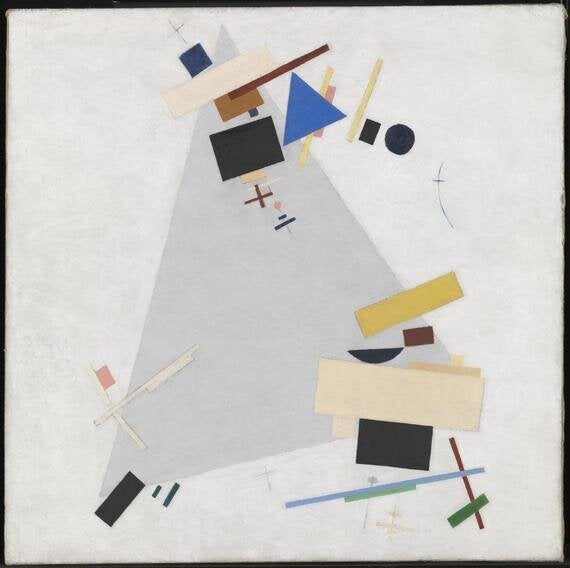
Kazimir Malevich, Dynamic Suprematism 1915 or 1916, oil on canvas. Purchased with assistance from the Friends of the Tate Gallery 1978
3. It's a revolutionary symbol
So what is exactly is suprematism? Created by Malevich, it's all about the supremacy of colour in painting. He took geometric shapes and a limited palette of colours and created a specific focus on the painted form and colour existing on the canvas purely as paint, not representing a scene or a landscape or a person.
However, the Black Square is not just the first painting in a new movement, it's a totally different kind of object to what had gone before. Malevich promoted it as a sign of a new era of art and he saw it as beginning at zero, that's what the 0.10 of the exhibition title pays reference to. (However, of course it's never that simple - his journey to this point was cleverly constructed. Though he declared the Black Square the first suprematist painting, x-rays show a multi-coloured suprematist composition underneath).
When he premiered the Black Square the world was going up in smoke - it was in the middle of the First World War, following the 1905 Russian revolution, and the continuing unrest that just a few years later in 1917 would explode into the Bolshevik uprising and October Revolution. The Black Square arrived at a time when Russian art crowds, although used to seeing cubist and futurist works, would never have seen a work like this. Bearing this turbulent time in mind, it seems difficult to think of the artistic revolution Malevich was bringing about as separate from the social revolution that was happening. Malevich didn't intend for the Black Square to be a representation of a real thing, but a sign of a dawn of new age.
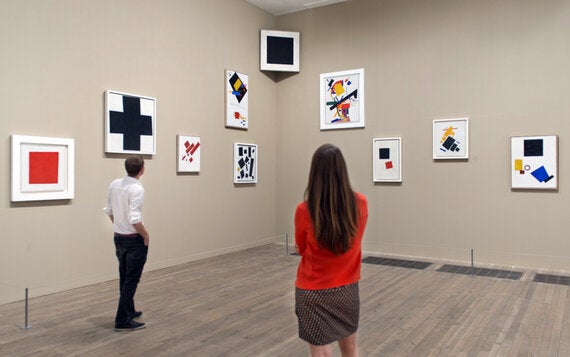
Malevich at Tate Modern, © Tate. Photo: Olivia Hemingway
4. It was the first icon that wasn't, well, an icon
When Malevich unveiled the Black Square at the The Last Exhibition of Futurist Painting 0. 10, held in the newly-named Petrograd in December 1915, he was keen to showcase suprematism, his new idea, and the Black Square was placed high up on the wall across the corner of the room. Though this position might mean nothing to the average non-Russian viewer today, it was the same sacred spot that a Russian Orthodox icon of a saint would sit in a traditional Russian home - and this likeness wasn't lost on people in Petrograd. Malevich wanted to show the Black Square to be of a special or spiritual significance, make it the star of the show and the overriding emblem of his new style.
The Black Square did become his motif, even his logo or trademark. Even in his later work, when he made a return to figurative paintings (often of peasants and workers) you can see he signed a many of them with a little black square. At his funeral the car carrying his body had a Black Square on the front, mourners held flags decorated with black squares, one was fixed above his suprematist-style student designed coffin, and it went on to mark his grave. It became not only an icon of his style, but an icon of twentieth century art.
But, with all that in mind, if you're still in the dark...
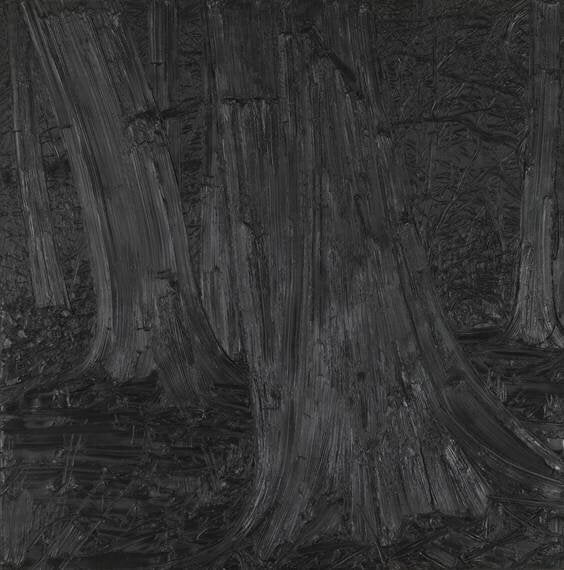
Gillian Carnegie, Black Square 2008, oil on canvas. Presented by Tate Members 2010 © Gillian Carnegie
5. There's no 'right' way to look at it
Within months of Malevich's death in 1935, his work disappeared from public view and Stalin's state-sponsored social realism was adopted as the 'official art' of Soviet Russia. The Black Square wasn't exhibited again until the 1980s. It became an icon that couldn't be seen by many and so the idea of it remained like an almost mythical presence, and still continues to inspire and challenge artists and designers today. Yet because the square is obviously an average object, when you work with it, you can start to see it in different ways or think about how very simple objects can stand for certain ideas.
When it was exhibited people found it a strange thing and people still find it a strange object today. There's no wrong or right way to look at it; you could say it looks like a window into the night, or you could say it is just a black shape on a white canvas, (which is more of what Malevich was intending...) but it's like a very simple gesture. Malevich set out to forever change the idea of painting to represent reality, and its intriguing to think how doing something simple or even seemingly dull, can sometimes be revolutionary; that's what makes the Black Square a radical thing, however you look at it.
Malevich is at Tate Modern until 26 October
This post originally appeared on the Tate blog